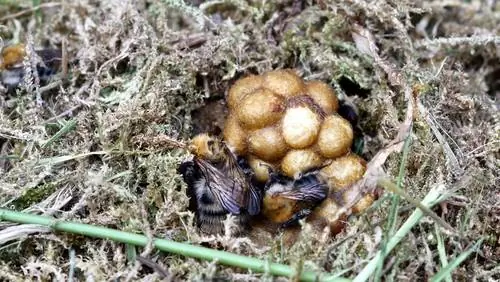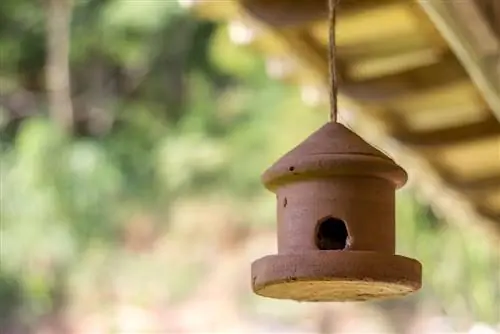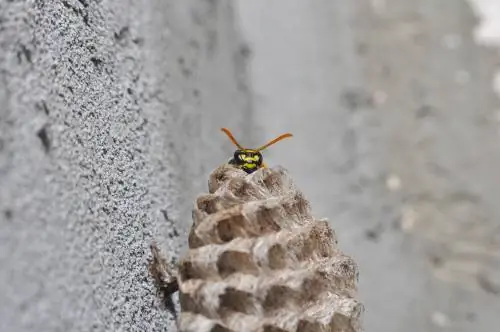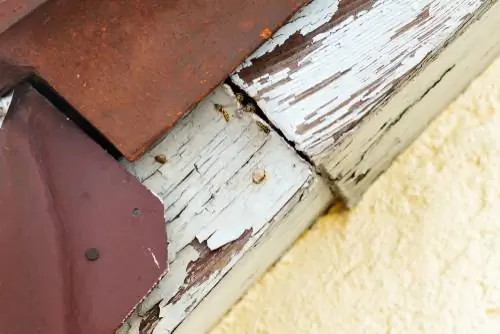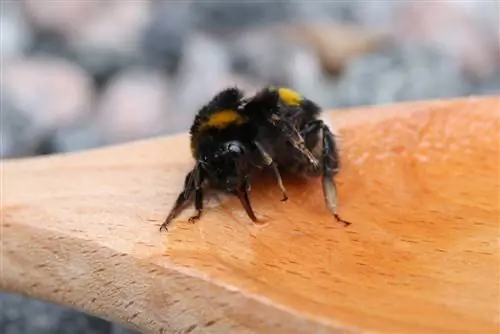- Author admin [email protected].
- Public 2023-12-16 16:46.
- Last modified 2025-01-23 11:22.
Bumblebees are important pollinators in our garden. Their work ensures that there are plenty of fruits and vegetables. Because of their long proboscis they can visit long and narrow calyxes that bees cannot reach. To attract bumblebees to beds, a bumblebee nest can be built from a flower pot.
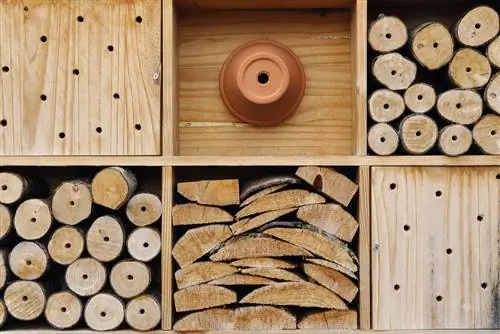
How to build a bumblebee nest from a flower pot?
You can build a bumblebee's nest out of a flower pot by filling the pot with straw or dry moss, digging it into the ground at an angle and covering it with a board. Place pebbles around the pot to help the bumblebees get started.
The habitat for bumblebees
In nature, bumblebees can be found in tree hollows, in cavities between brick walls or in holes in the ground in meadows. If possible, you should always be near fruit trees, berry bushes, clover or culinary herbs. To give them a nesting aid and thereby attract them to flowerbeds or the vegetable garden, a bumblebee nest can be built from simple materials.
Building a house for bumblebees
There are different versions here. The person who only wants to spend a little time builds an above-ground bumblebee nesting place from a flower pot. This should be filled with some straw or dry moss as nesting material and then buried at an angle in the ground so that no rainwater can drip through the hole into the nest. A board above the flower pot also retains rainwater. A way to help the bumblebees get started is to place a few large pebbles around the pot. Bumblebees like to crawl into their nest.
A nesting box underground
This is an elaborate variant with several pots. Build the box as follows:
- Take two large flower pots and insert a piece of hose through each hole in the bottom (the tunnel for the bumblebee to enter).
- Attach the hose in a light and waterproof manner using adhesive tape (€9.00 on Amazon).
- Drill three holes on one side of each of the two pots (this will later be used to drain rain and condensation water).
- Glue the holes from the outside with fine mesh material (tights or fly net). This means no parasites can get in.
- Put a small, sieve-like pot (found in pond planting) into both pots and fill one with nesting material.
- The hose from the large pot is also inserted into the sieve pot and secured.
- If possible, connect the large opening of the sieve pots using a cable tie.
- Now place the large flower pots with the openings on top of each other.
- Seal the joint with strong tape.
- Bury the pot box lying down so that only the two hose ends stick out as entrances.


